Design guidelines
Our tips will help you choose what to plant along the fence in the country and properly improve the hedge:
- Determine the light level. A bright sunny area and a shaded area require different types of plants.
- Set a goal for landscaping. The composition along the fence with loaches will help to hide the fence, to create a shadow - the trees along the fence.
- Check the dimensions of the yard. For small areas, choose low bushes along the fence or flower beds. On the spacious ones, you can install a hedge of trees.
- Match plants to the type of soil. Some species like sand, others like black soil.
- Consider leaving in advance. Don't you like to tinker in the garden? Look for low-maintenance plants to plant that can easily tolerate drought.
What is usually planted?
Landscaping along the fence involves using one or more types of seedlings. They are usually classified by height: low flowers, medium shrubs, or tall trees. The first ones perform rather a decorative function. The latter - create a shade, protect from noise and dust from the road.
Shrubs
Their main advantage is their low height. If trees in a circle can create the feeling of a small enclosed space, then this will not happen with bushes.
You can plant perennial shrubs along the fence in both large and small areas. They can be:
- deciduous - turf, euonymus, cotoneaster, boxwood;
- fruit - raspberries, currants, felt cherries, honeysuckle, barberry, rose hips, irga, hawthorn - a harvest of delicious fruits is an excellent reward for your work;
- blooming - lilac, azalea, buddlea, weigela, hydrangea, rhododendron.
In the photo, trimmed bushes in one row
Many shrubs can be trimmed into fancy shapes - if you learn how to trim yourself or periodically invite a specialist, green shapes can become a feature of your garden.
Flowers
In the previous section, we already mentioned that shrubs are blooming. But the flowers along the fence can be even lower and more compact. When choosing suitable varieties, take into account the height of the adult plant, the flowering period. To make the flower garden look decorative all season, plants of different sizes, different times are combined in planting.
Most popular flower crops:
- Rose flower. Climbing varieties curl beautifully along the net (if the fence is made of chain-link), they are used to decorate gates and awnings.
- Wisteria. Powerful vine with beautiful buds. Usually planted under strong fences made of brick or stone.
- Dahlia. Low bushes with large flowers are the decoration of any garden.
- Pion. Lush, fragrant tight peonies bloom in early summer, when other plants are just picking up color.
- Gladiolus. Loved by many since school times, they look beautiful in a row.
In the photo, wildflowers near the picket fence
If you want to achieve the effect of slight chaos and not devote much time to caring for the flower bed, plant cosmea, white chamomile, cornflowers, poppies, lavender, petunia.
Trees
In the garden, it is logical to plant fruit and berry trees along the fence: apple, pear, plum, cherry, chokeberry, apricot.Although they require special care, they will delight you with fresh fruits and berries every summer and autumn.
Near the fence of a private house, both compact fruit and high decorative deciduous varieties are planted. It can be blue or ordinary spruce, pine, aspen, oak, chestnut, maple. Poplars and birches are highly allergenic, so it is better not to use them in close proximity to living quarters.
- Growth perspective. Consider how tall and wide an adult tree will be and think in advance - will it not cover important areas from the sun?
- Root system. It grows as it grows up and can break the fence - so move the seedling 3-5 m away from the edge.
Conifers (spruce, thuja, cedar) purify the air well, and thanks to the preservation of needles, your possessions will be hidden from prying eyes all year round.
If you plant deciduous trees (aspen, linden, etc.) near the fence, you can observe the beauty of nature - in the summer it will be green on the site, in the fall the trees will flash yellow and red, in the spring the buds will begin to awaken and new leaves will appear.
In the photo, the same thuja in a row
Mixborder
Planting flowers, trees and shrubs along the fence means creating a mixborder on your site. This composition is collected from absolutely any species: annual and perennial, large and short, flowering, berry and decorative. When planting a similar mix, arrange it so that the flower bed looks aesthetically pleasing from May to October - first some bloom, then others.
Try to arrange the seedlings according to the principle of a ladder, paying attention to the size of the grown, and not the young seedling.
- On the first line - low grass and flowers. Usually these are early flowering tulips, daffodils, lilies of the valley.
- In the center, medium-sized bushes blooming in June-July - lilies, peonies.
- Behind - tall trees and shrubs, preferably late flowering or with bright (yellow, red) leaves.
In the photo, a mixborder with various plants
Choosing plants for the type of fence
The material from which the fence is made also affects the landing.
Wooden fence
Wood is a natural material that blends perfectly with greenery and flowers. Therefore, whatever you plant, the result will be attractive. Usually bushes are located along, or tall flowers - unpretentious mallow, sunflower. If the stakes are rare, take a closer look at the loaches - girlish grapes, for example, grow quickly and will be amazingly wrapped around the boards.
In the photo, a mix of decorative and deciduous
Rabitz
Choose the material for planting depending on your task - to hide or decorate. To hide, it is enough to plant tall trees or bushes along the fence from the street and yard. They will simultaneously hide the unsightly mesh and you from curious passers-by.
You can decorate the mesh with various loaches: fast-growing clematis, annual cobea or nasturtium, perennial ivy, grapes, hops.
The photo shows an example of using bushes near the grid
Profiled sheeting / profiled sheet
A deaf fence made of profiled sheet does not need additional insulation, so low bushes are planted along it or bright flower beds are broken.
But before planting, check how the fence regulates sunlight: a galvanized sheet, for example, will reflect it and the plants will simply burn out in the sun. Dark, on the contrary, conceals and creates a shadow, which is also not always good, and also becomes very hot.
Also, avoid thorny bushes and flowers - they can scratch the fence in the wind, ruining the appearance.
In the photo trimmed thuja
Wrought iron fence
Everything that happens inside is visible from the street side, which means that you need to take care of the aesthetic "inside out". A mixborder, for example, should not be pressed against the fence with its high side (if you do not want to hide from your neighbors). It is better to make it two-sided - so that the high part is in the center, and lower levels depart from it towards the house and the fence.
In the photo, a variant of a high flower bed
Brick fence
The brick structure is dense, not letting the sun and air through. Blue spruces, thujas, cedars look good along it. In the shade of the fence, hosts, ferns, phloxes, dicenters will feel good.
In the photo, a combination of high and low seedlings on the site
What can be planted from the street side?
If you do not have a personal gardener, it is better to plant something decorative on the street side, but as easy as possible to care for.
Willows, birches, maples, chestnuts, lilacs, and pines grow practically independently. Unlike dwarf and undersized species, tall ones perfectly absorb dust, extraneous noise, and create a pleasant shade.
Love to maintain your garden and don't want to darken too much? Choose bushes (tea rose, juniper, rose hips, lilacs) or flowers (peonies, dahlias, chrysanthemums, asters). Azalea, buddleya will grow well in the shade.
In the photo of the thuja outside the house
Photo gallery
Living plants along the fence are an excellent decoration for the site, both inside and outside. But in order for the composition to delight you in winter and summer, consult with specialists before buying and plant only species that are suitable for your conditions (sun, soil, temperature).

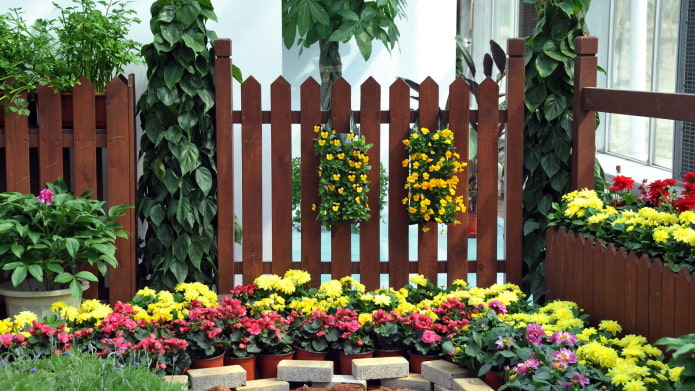
 10 practical tips for arranging a small kitchen in the country
10 practical tips for arranging a small kitchen in the country
 12 simple ideas for a small garden that will make it visually spacious
12 simple ideas for a small garden that will make it visually spacious
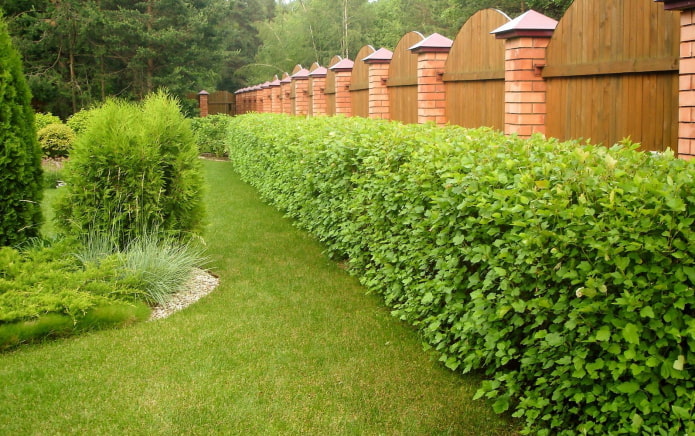
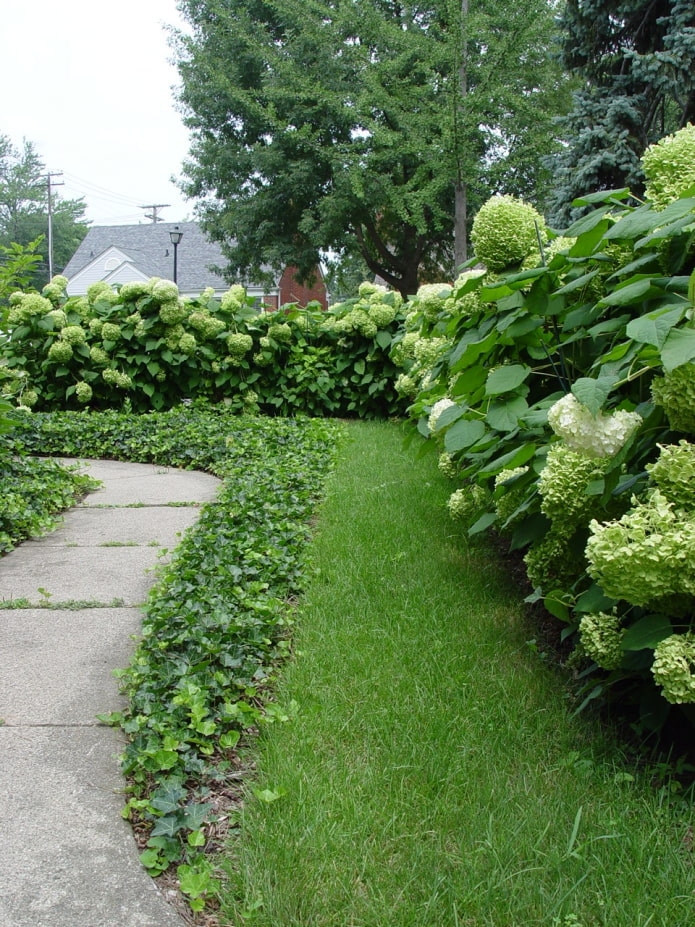

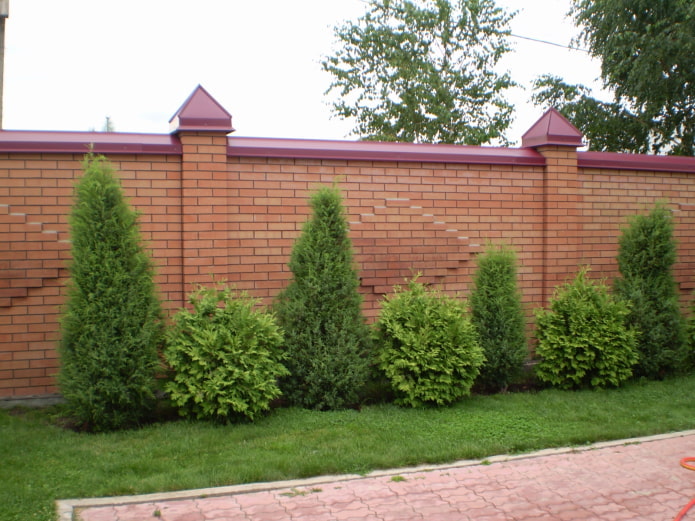
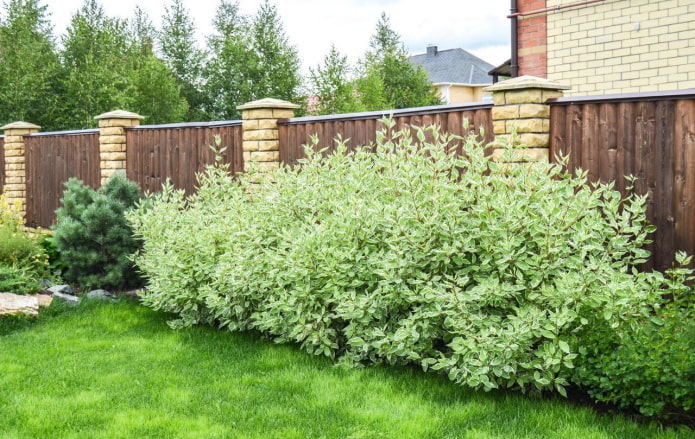
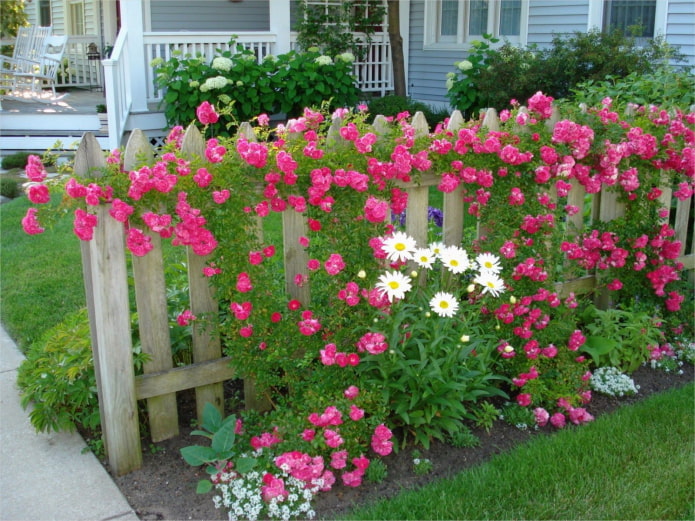
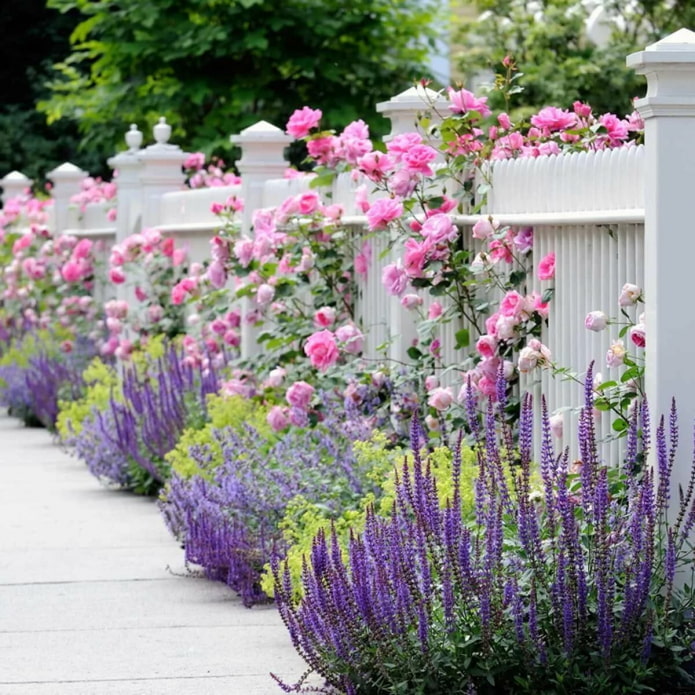
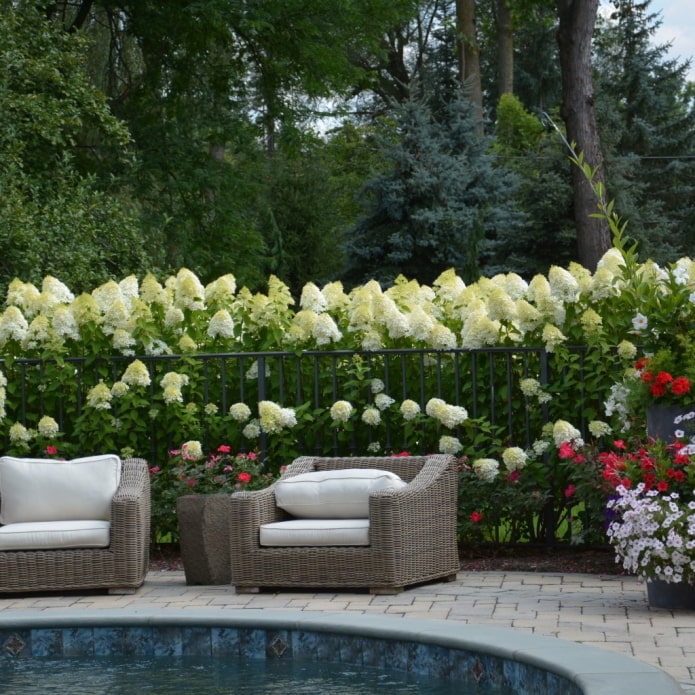
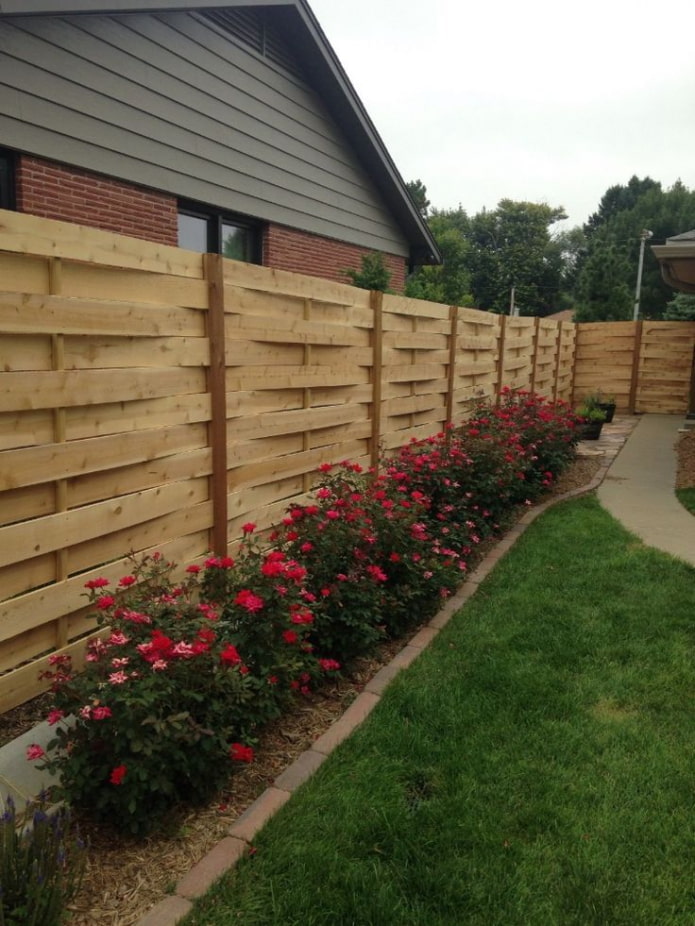

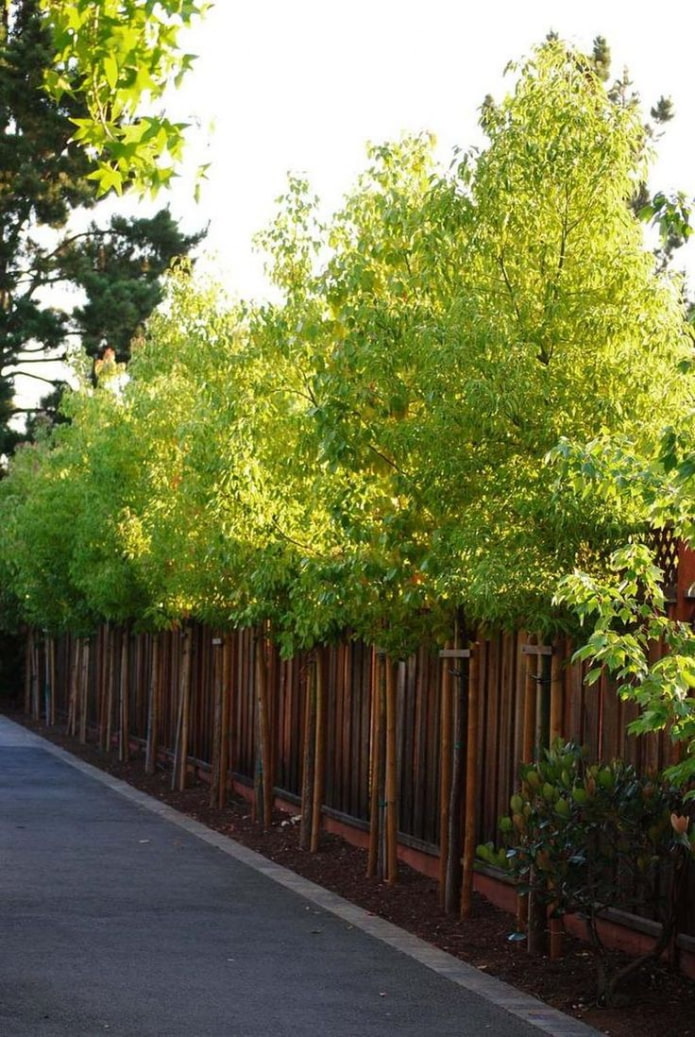

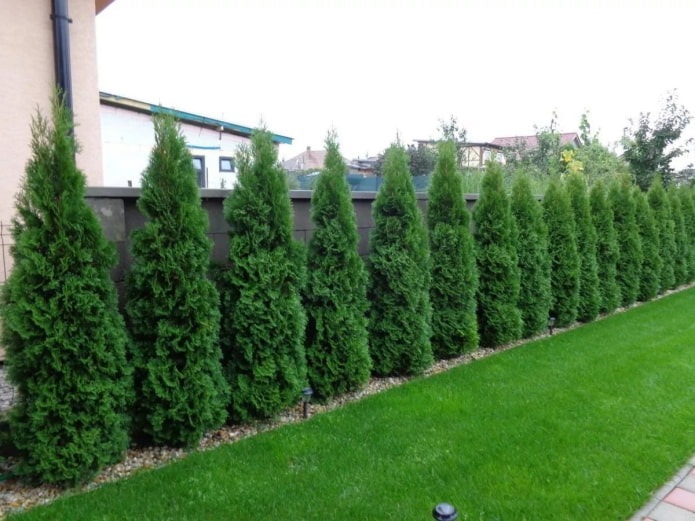
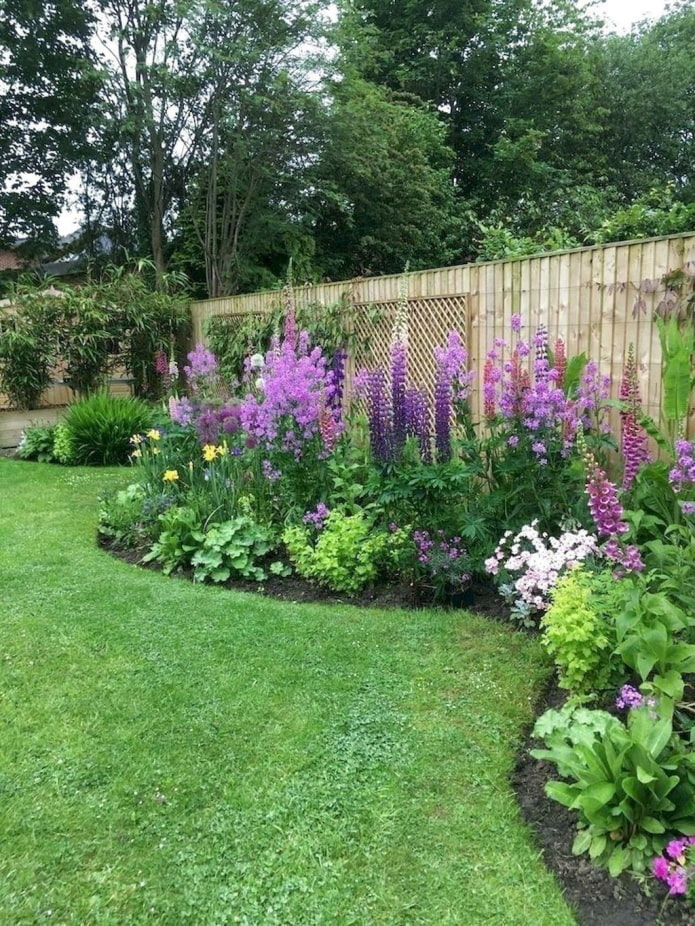
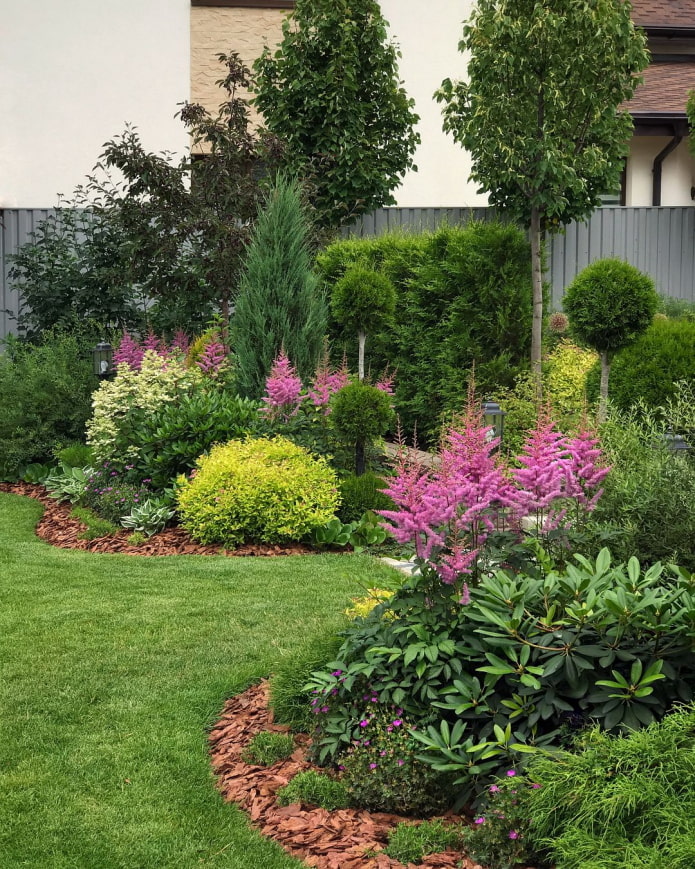
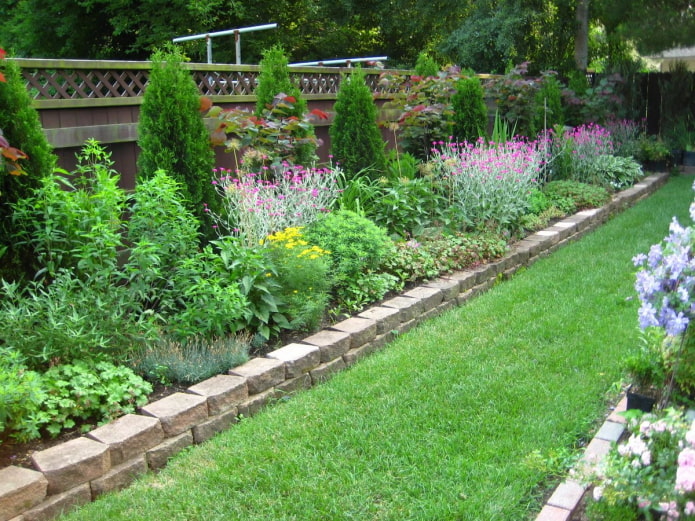
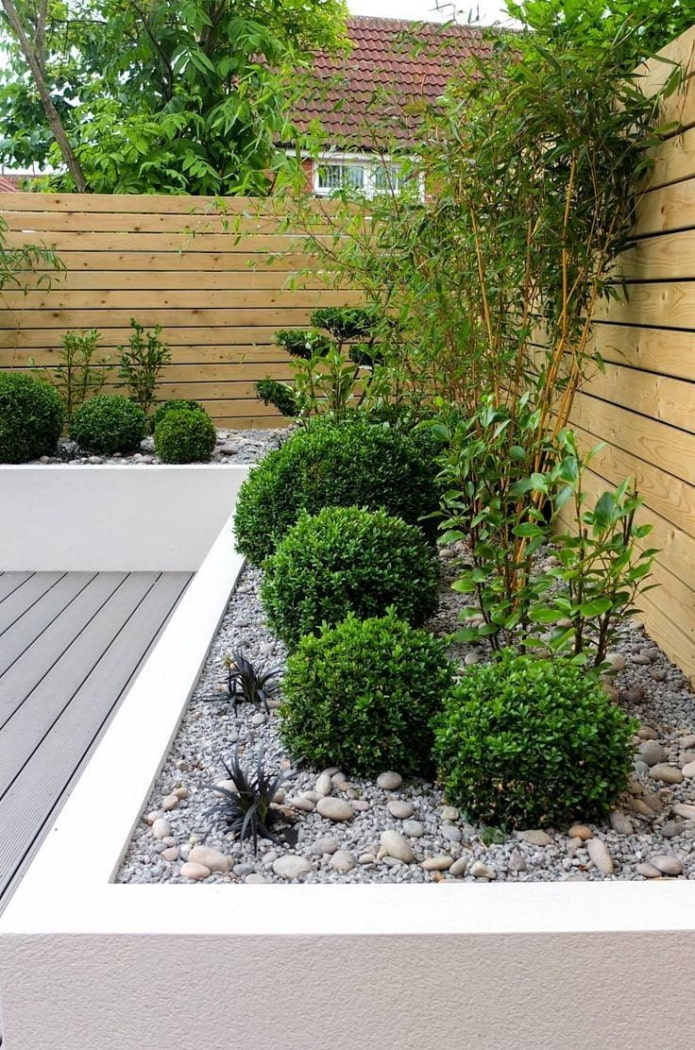
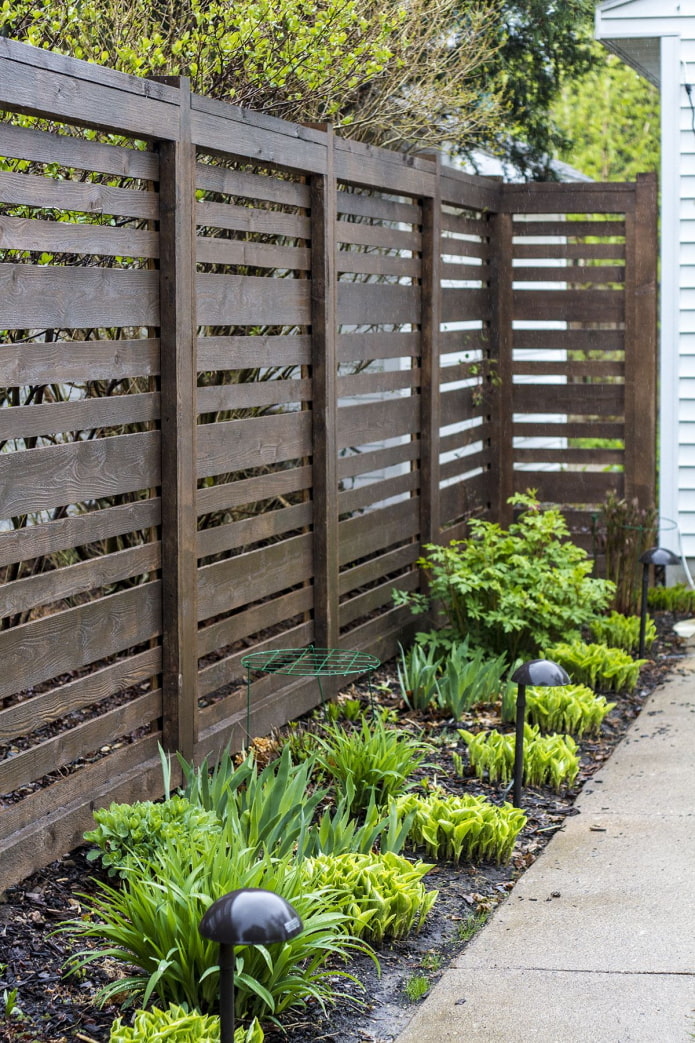
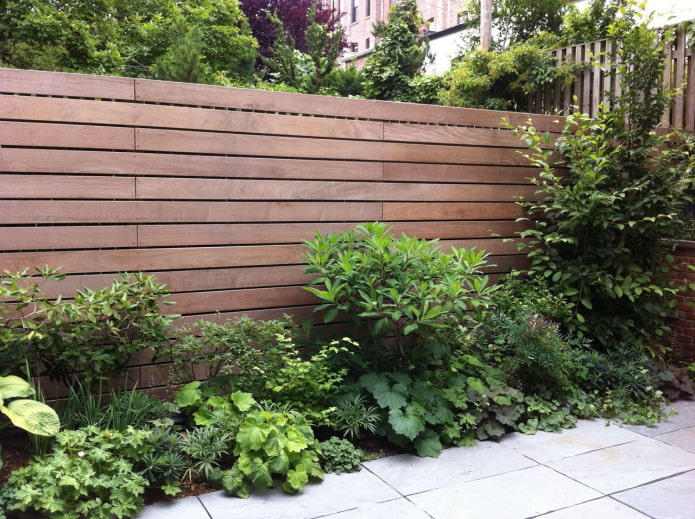

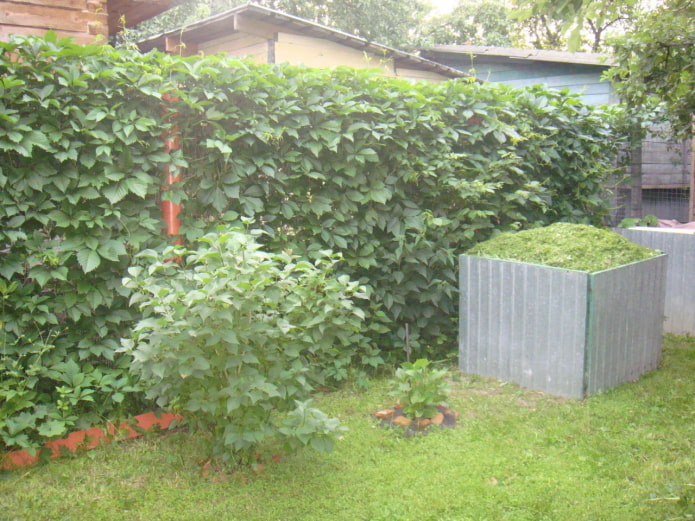

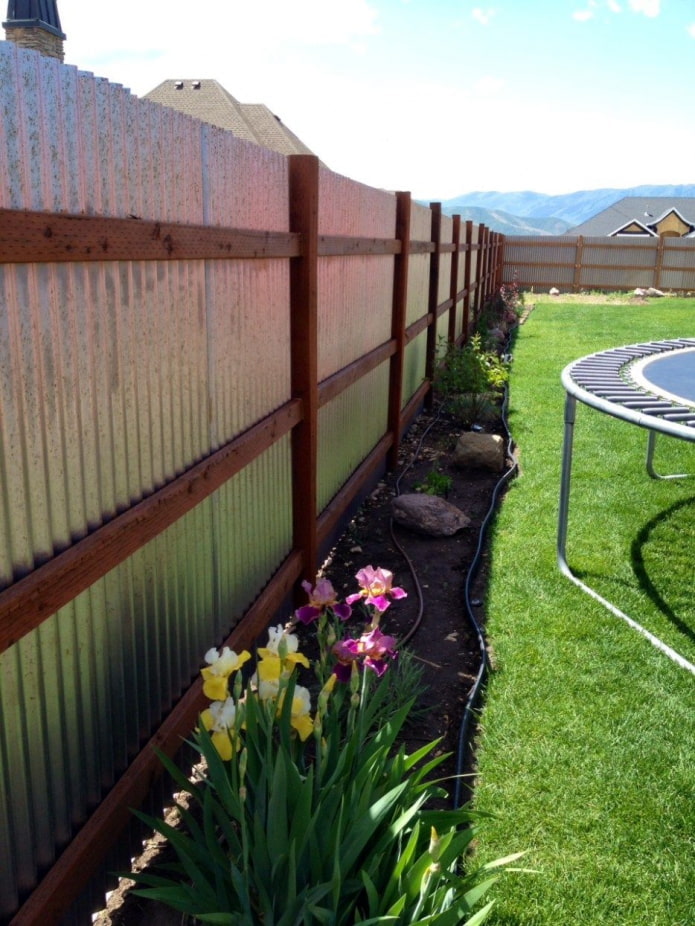


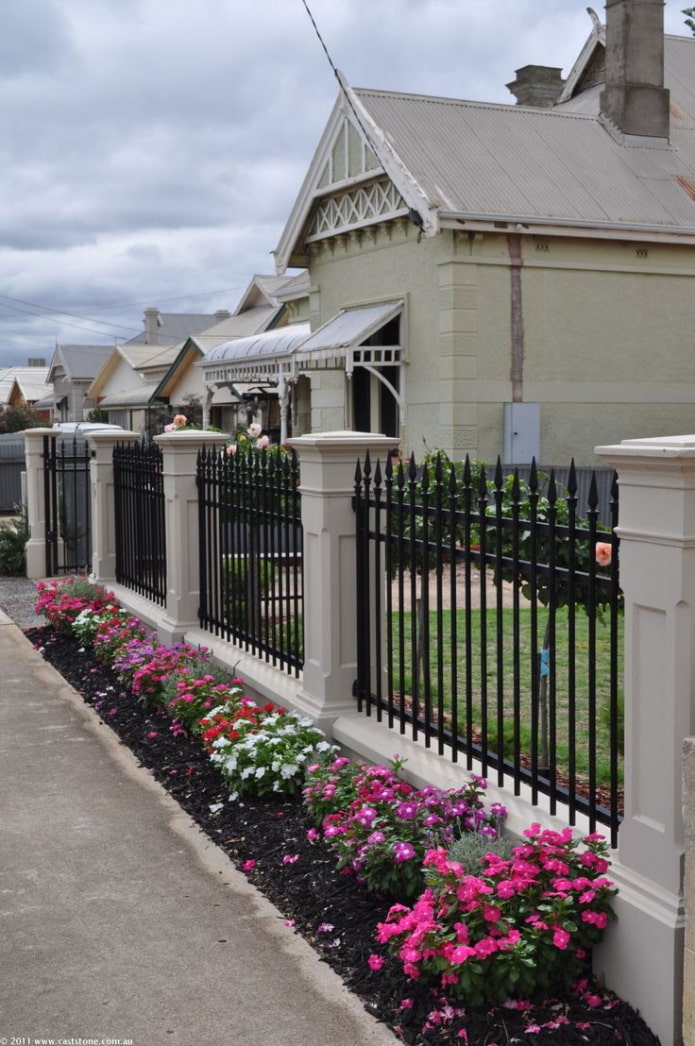
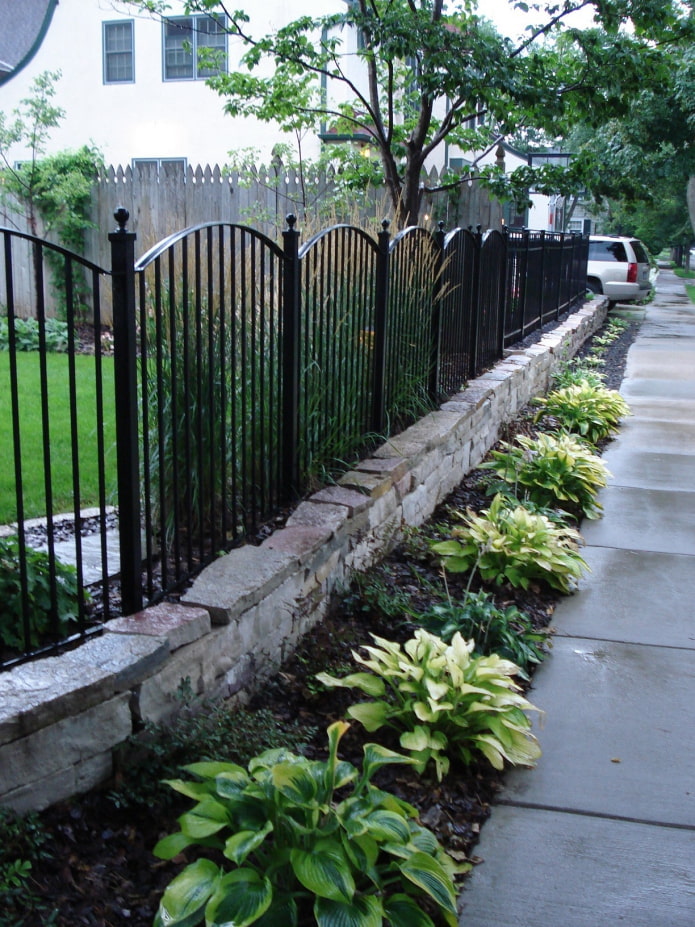
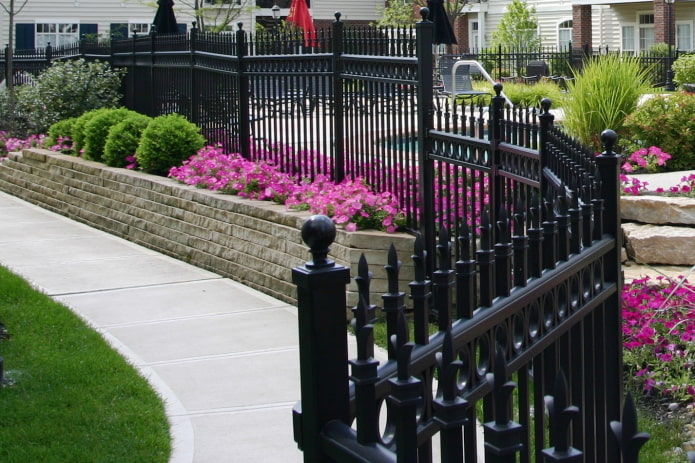
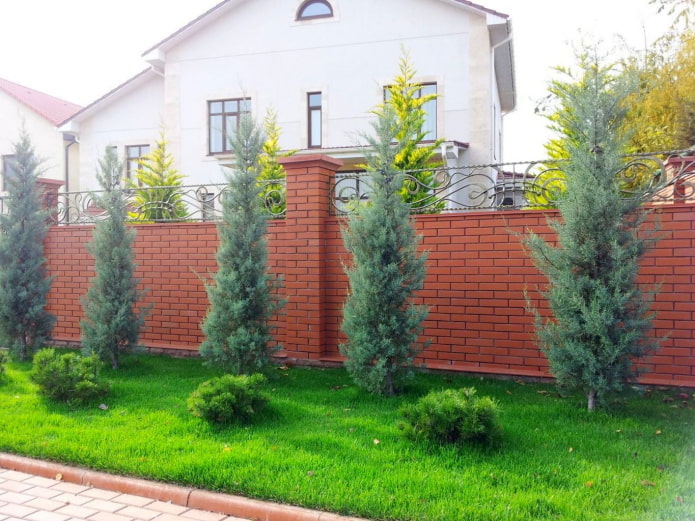
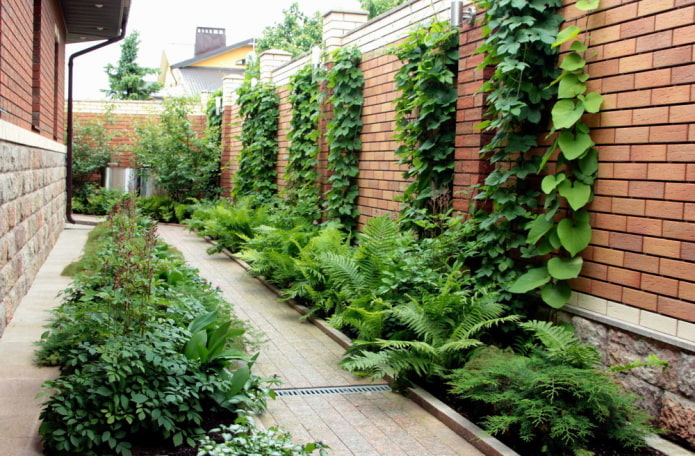
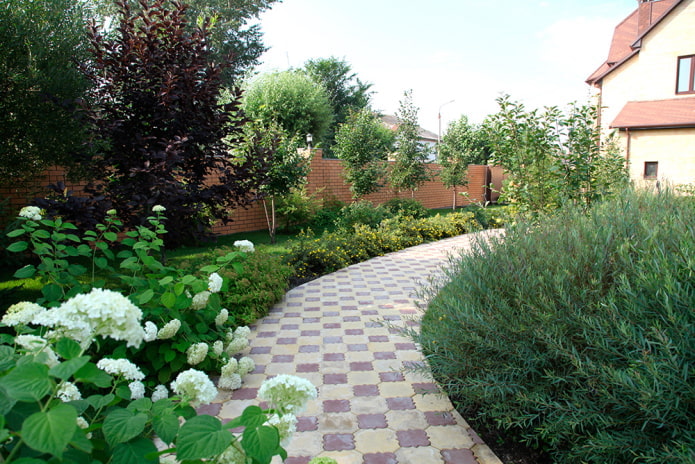

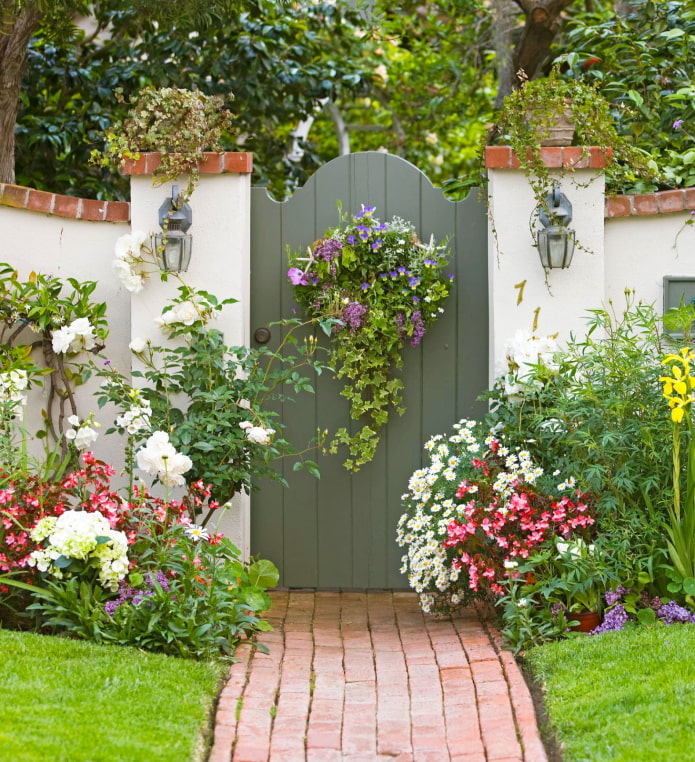
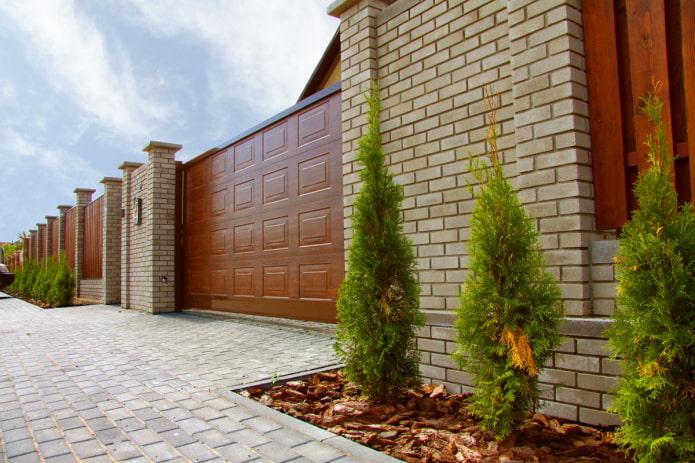
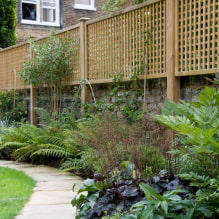
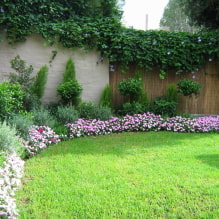
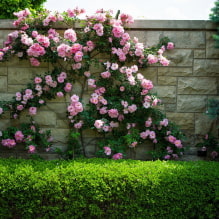
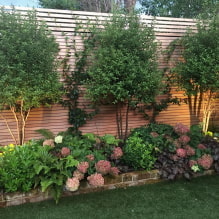

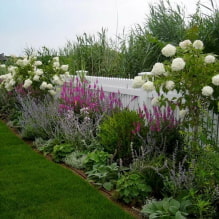

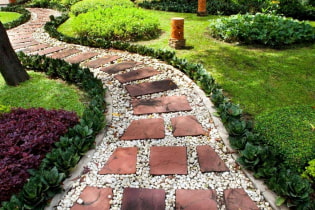 How to decorate garden paths beautifully for a summer residence?
How to decorate garden paths beautifully for a summer residence?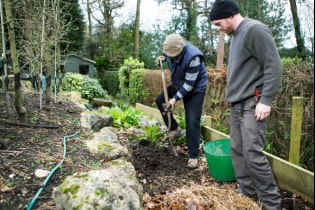 What fertilizers to use in spring?
What fertilizers to use in spring? How to use gabions on the site?
How to use gabions on the site?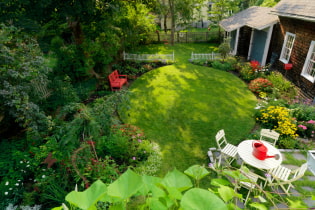 Landscaping of a summer cottage on 6 acres
Landscaping of a summer cottage on 6 acres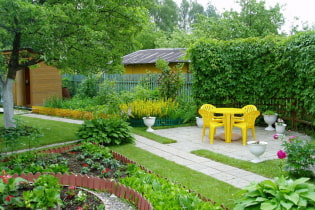 How to arrange the landscape design of a suburban area of 4 ares?
How to arrange the landscape design of a suburban area of 4 ares?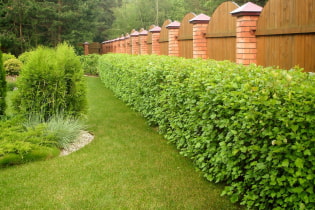 What plants can you make a hedge?
What plants can you make a hedge?